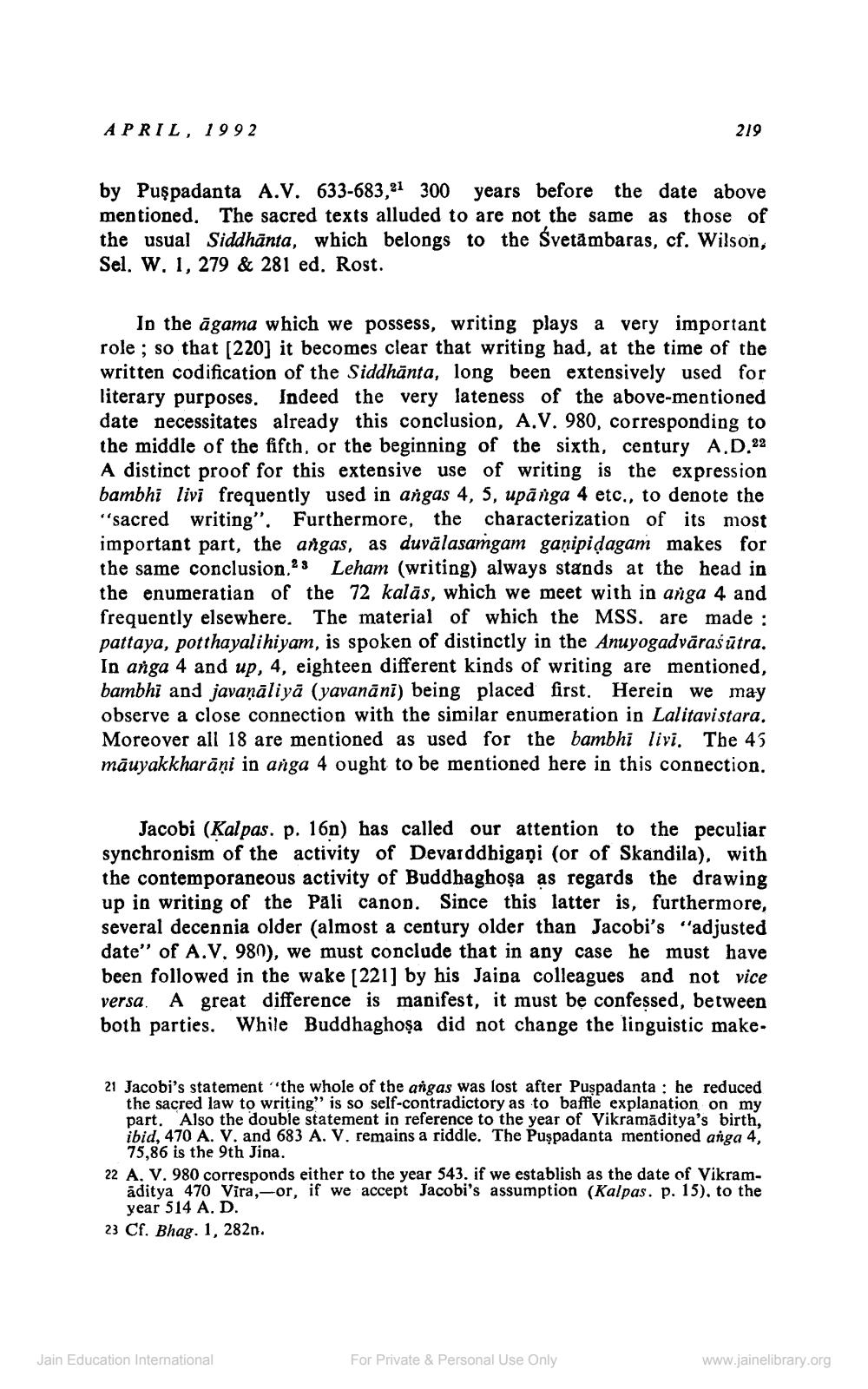________________
APRIL, 1992
219
by Puşpadanta A.V. 633-683,21 300 years before the date above mentioned. The sacred texts alluded to are not the same as those of the usual Siddhānta, which belongs to the Svetămbaras, cf. Wilson, Sel. W. 1, 279 & 281 ed. Rost.
In the āgama which we possess, writing plays a very important role; so that [220] it becomes clear that writing had, at the time of the written codification of the Siddhānta, long been extensively used for literary purposes. Indeed the very lateness of the above-mentioned date necessitates already this conclusion, A.V. 980, corresponding to the middle of the fifth, or the beginning of the sixth century A.D.22 A distinct proof for this extensive use of writing is the expression bambhi livi frequently used in angas 4, 5, upānga 4 etc., to denote the "sacred writing". Furthermore, the characterization of its most important part, the angas, as duvālasamgam gaṇipidagam makes for the same conclusion 23 Leham (writing) always stands at the head in the enumeratian of the 72 kalās, which we meet with in anga 4 and frequently elsewhere. The material of which the MSS. are made : pattaya, potthayalihiyam, is spoken of distinctly in the Anuyogadvārasūtra. In anga 4 and up, 4, eighteen different kinds of writing are mentioned, bambhi and javaņāliyā (yavanāni) being placed first. Herein we may observe a close connection with the similar enumeration in Lalitavi stara. Moreover all 18 are mentioned as used for the bambhi livi. The 45 māuyakkharāni in anga 4 ought to be mentioned here in this connection,
Jacobi (Kalpas. p. 16n) has called our attention to the peculiar synchronism of the activity of Devarddhigapi (or of Skandila), with the contemporaneous activity of Buddhaghoşa as regards the drawing up in writing of the Pali canon. Since this latter is, furthermore, several decennia older (almost a century older than Jacobi's "adjusted date' of A.V. 980), we must conclude that in any case he must have been followed in the wake [221] by his Jaipa colleagues and not vice versa. A great difference is manifest, it must be confessed, between both parties. While Buddhaghosa did not change the linguistic make
21 Jacobi's statement the whole of the angas was lost after Puspadanta: he reduced
the sacred law to writing" is so self-contradictory as to baffle explanation on my part. Also the double statement in reference to the year of Vikramāditya's birth. ibid, 470 A. V. and 683 A. V. remains a riddle. The Puşpadanta mentioned anga 4,
75,86 is the 9th Jina. 22 A. V. 980 corresponds either to the year 543. if we establish as the date of Vikram
aditya 470 Vira, or, if we accept Jacobi's assumption (Kalpas. p. 15), to the
year 514 A. D. 23 Cf. Bhag. 1, 282n.
Jain Education International
For Private & Personal Use Only
www.jainelibrary.org




